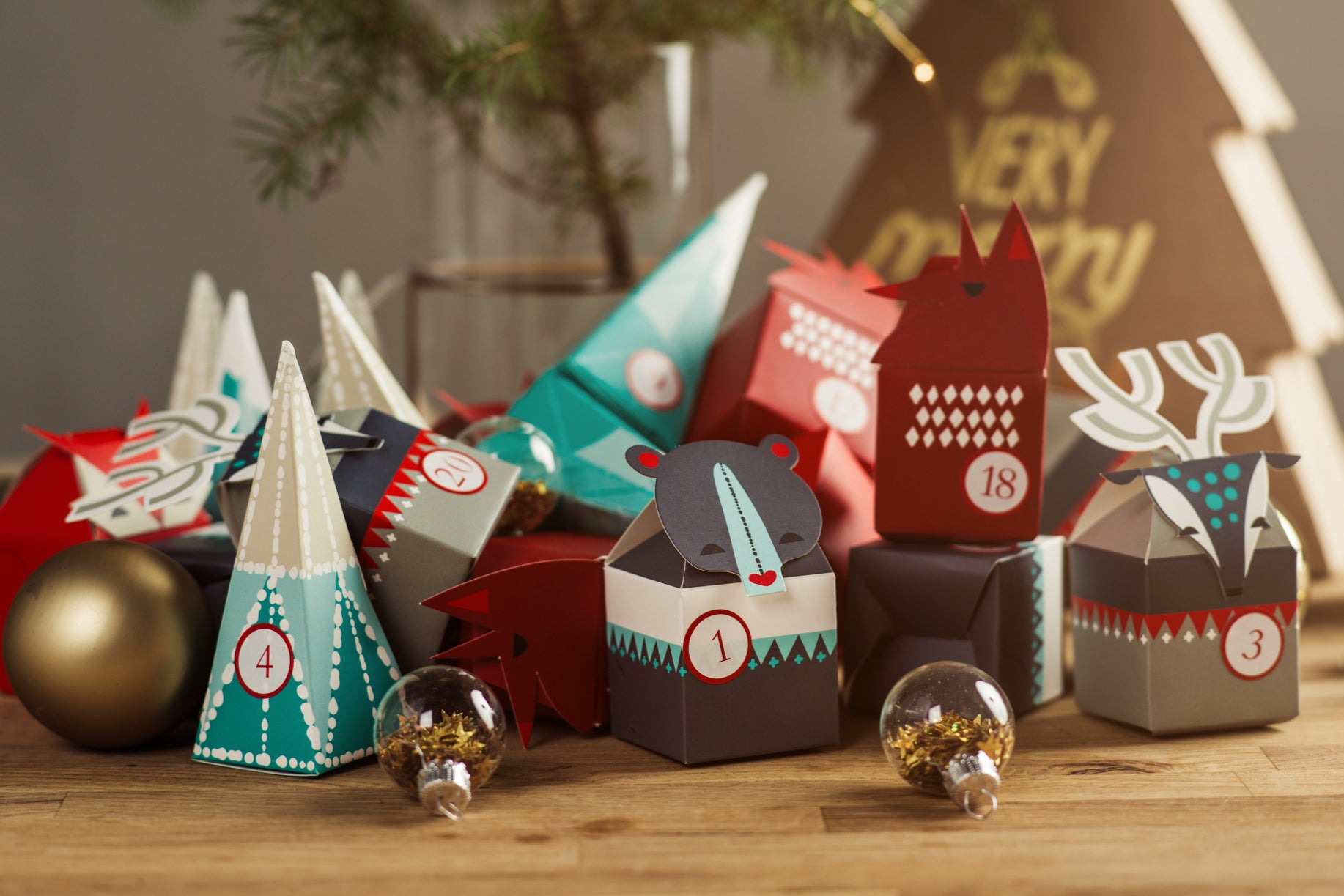When I was growing up, nothing heralded the beginning of Christmas like the Playmobil advent calendar. On 1 December, my sisters and I would come downstairs to assess this year’s selection of small cardboard boxes. Each contained a tiny toy, a composite part of a winter market scene that would build up as the month progressed. We’d take turns to open one every day. As the eldest of our trio, I’d use my more advanced maths skills to not-so selflessly volunteer to go last, triumphant in the knowledge that three times eight equalled 24, and so I’d be able to lord it over my siblings with the biggest box on Christmas Eve. For the next 12 months and beyond, we’d play with the spoils – our Playmobil characters were constantly feasting on plastic pretzels and stollen.
For my primary school self, the ritual of the Playmobil calendar was truly enthralling, the pinnacle of advent innovation. Little did I know that over the course of the next couple of decades, the bar would raise exponentially – and that fancy advent calendars would just as often geared towards adults as they would be aimed at kids. This year, if you’re willing to part with hundreds of pounds, you could wake up each morning to a bijou candle or tiny fragrance from a chic perfumier, or try 24 tasty titbits from a posh farm shop. You could down a teensy sample of artisan gin (the normal rules on day drinking tend to go out of the window in December, after all) or brew up a niche coffee sample. And if you don’t want your beloved pet to miss out on the fun, there are options for them too.
For all my Playmobil-related nostalgia, the rise and rise of grown-up advent calendars makes me feel more Scrooge-like with every passing year: as the offerings get more and more extravagant, and their vice-like grip on the festive season tightens, my hater impulses only harden. Call me a cynic, or call me a joyless old bore who can’t bear anyone having nice things, but Christmas is already the season of vast overconsumption, with the UK typically producing around 30 per cent more waste than during the rest of the year. So what does the fact that so many people have collectively embraced yet another tactic to get us to buy, buy, buy say about us? Nothing good, I’m sure.
Just under half of British adults expect to receive an advent calendar, according to research from YouGov. No wonder the anticipation surrounding the big reveal of some of the more in-demand launches – the ones from high-end beauty brands and department stores, for example – has turned into a seasonal ritual all of its own. Devotees ooh and ahh on social media about the fancy contents and gorgeous packaging, try to pass it off as a “real bargain, actually”, because the cumulative price of the products outstrips the cost of the calendar, then rush to snap one up before they inevitably sell out. And then, when December finally rolls around, there’s a flurry of unboxing videos on Instagram and TikTok.

It’s hard to avoid the sensation that these products are just a very clever marketing exercise. The advent calendar “taps into childhood nostalgia”, says Steph Thomas, head of retail experience at advertising agency VCCP, “but also for any age, it creates classic Pavlovian behaviours” – it conditions us, she says, to “associate daily product reveals with excitement and anticipation” and builds a sense of “ritualistic allure”. I’d disparagingly wondered whether such calendars are a way of shifting unwanted stock to make a quick profit, but Thomas suggests that they can actually “be an initial loss” for many brands, who are instead playing a longer (and possibly more devious) game. “It’s a long-term customer value play,” she says, with each set acting as a “gateway” that might “transform one-time buyers into repeat customers” by getting them hooked on multiple products. It’s a “strategic play”, she adds, with the potential to “secure future revenue far beyond the holiday season”.
In a way, actually finding, say, your new favourite moisturiser and serum hiding behind the glittering numbered doors is arguably the best-case scenario. The proud owners of beauty, food, drink and even jewellery calendars are surely left with a load of stuff that doesn’t suit them or their tastebuds. Do you really need 24 tiny lipsticks that don’t really resonate with your skin tone and hair colour? Or would you be better off buying one or two that you’ll wear every day? I’ve always questioned why someone who’s a big enough beauty aficionado to drop several hundred quid on a high-end calendar would want an array of products that won’t necessarily work for them. My blemish-prone complexion requires different care than that of, say, someone in their sixties who prefers richer, more nourishing lotions and creams. “A dense, multi-product approach can also disrupt skin health,” says Olivia Houghton, beauty, health and wellness lead at trend forecasting consultancy The Future Laboratory.
Making these scaled-down versions of conventional products can be almost as energy-intensive as creating their full-size counterparts
Perhaps most concerning, though, is the sustainability question. It’s estimated that 16.5 million advent calendars containing single-use plastics are in circulation each year. Rachel Watkyn, founder of sustainable packaging brand Tiny Box Company, tells me that some premium calendars will be “made from card with a lower environmental impact” than the cheaper, chocolatey options. Liberty’s beauty calendar, for example, is housed in a recyclable box. But not all brands take the same approach. “Many advent calendars use a combination of materials such as plastic trays, cardboard and metallic foils, which are often glued together,” says Lorraine Allman, eco-entrepreneur and founder of the Party Without Plastic marketplace. “These mixed materials make it very difficult to separate for recycling,” she adds – plus, many recycling facilities “simply cannot process” some “composite materials such as glitter-coated cardboard or metallic printed paper”.
Teeny tiny products can cause issues too, because they might be too small to make it through the sorting screens at your local recycling plant. “There’s a reason lids on soft drinks bottles now come attached – it stops them falling through the sorting systems,” Allman says. Anything that’s really diminutive might slip through and end up in landfill or in the ocean. Plus, making these scaled-down versions of conventional products can be almost as energy-intensive as creating their full-size counterparts, but will last us nowhere near as long – they might look cute, but miniatures are often environmentally inefficient.
There’s a school of thought that as the world around us becomes scarier and more stress-inducing, us grown-ups need shiny distractions, just like the ones we enjoyed when we were kids – when everything seemed a bit more stable. But these extravagant, environmentally dubious calendars feel like “little treat” culture gone haywire. It’s consumption dressed up as self-care – and filling your life with tonnes of tiny hand creams or scaled-down shimmering eyeshadow might just make you feel a bit empty inside.







